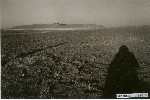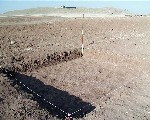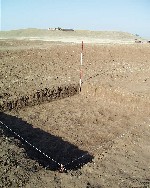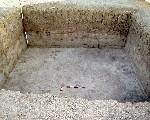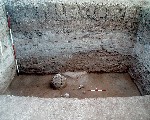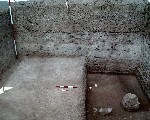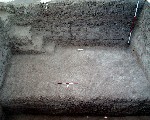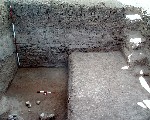| Daily |
1998-7-7 | jW |
excavated about 50 cm across the entire locus of k1. Two bags of pottery were found, a slightly larger amount than on I705. A small amount of bone was also found, but no artifacts. The soil is uniform in color and texture (Munsell 10YR4/4, dark yellowish brown), with vertical laminations. It is similar to the soil being removed from the well north of the tell, OP2 at a depth of greater than two meters.
[Input file: I707JLW.J / I707JLW.-J]
|
| Strategy |
1998-7-7 | jW |
on I708 we plan to use the same composition of workforce, but we expect to be able to dig faster since we were delayed today by the illness of the photographer.
[Input file: I707JLW.J / I707JLW.-J]
|
|
1998-7-11 | gB |
Jim has shifted the direction of excavation in a N-S direction, which helps to see better the direction of the deposition. Tomorrow, we will continue excavations in the NE half of the square only.
[Input file: I712JLW.J / I712JLW.-J]
|
| Accident |
1998-7-12 | gB |
Suleman injured his back when part of the tent blew down when hit by a dust devil. He was sent home by gB.
[Input file: I712JLW.J / I712JLW.-J]
|
